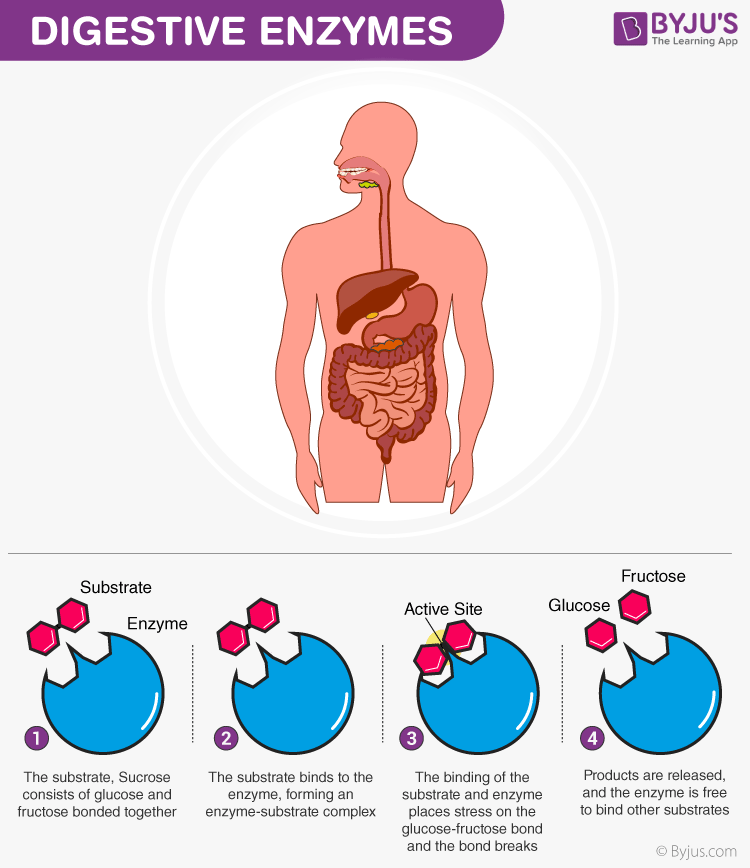
Table of Contents
Introduction
Digestive enzymes are the enzymes that break down polymeric macromolecules into smaller building blocks to facilitate their absorption by the body.
Our digestive system does not absorb the food we eat, it absorbs nutrients in the form of simpler molecules. Food needs to be broken down from products like steak and broccoli into amino acids (from proteins), fatty acids and cholesterol (from fats), and sugars (from carbohydrates) along with vitamins, minerals, and a variety of animal and plant compounds.
If we don’t have sufficient digestive enzymes, our food cannot be broken down. That means that even if we eat well, we aren’t absorbing good nutrition.
Digestive enzymes convert the food into smaller molecules that your tissues, cells, and organs utilize for many metabolic functions. It takes some time to complete this process and results in amino acids, glycerol, fatty acids and simple sugars. When you chew and break food into small pieces, special enzymes produced in different parts of your digestive region start acting to complete the process.
Amylase
Amylase is defined as a digestive enzyme that breaks starch into small carbohydrate molecules. This enzyme is produced in two areas. Firstly, salivary glands in our mouth generate salivary amylase that starts the process of digestion by breaking down starch and converting it into maltose and smaller carbohydrate. Cells in the pancreas also produce a different type of amylase, known as pancreatic amylase that travels via a duct to reach the small intestine. Pancreatic amylase finishes the digestion of carbohydrates, producing glucose.
Protease
This enzyme breaks down protein into amino acids, which are its building blocks. The three main protease enzymes are trypsin, pepsin, and chymotrypsin. Special cells produce an enzyme, called pepsinogen in your stomach that converts into pepsin when it comes in contact with the acid surrounding the stomach. Pepsin breaks some chemical bonds in the protein, creating smaller molecules known as peptides. The pancreas makes chymotrypsin and trypsin, enzymes that are liberated into the small intestine through the pancreatic duct.
Lipase
Lipase enzyme breaks down dietary fats into smaller molecules known as glycerol and fatty acids. A little quantity of lipase, known as gastric lipase is produced by the cells of the stomach. This enzyme mainly digests fat present in the food. The pancreas is the primary source of lipase in the digestive tract, which produces pancreatic lipase which acts in the small intestine. The bile produced in the liver and liberated in the intestine transforms dietary fat into small fat globules. Pancreatic lipase acts on these fat globules and converts them into glycerol and fatty acids which are small, energy molecules. Glycerol and fatty acids move in the blood and lymph vessels to move in every part of the body.
Although amylase, lipase, and protease are the major enzymes that your body utilizes to digest food, there are many other specialized enzymes also contributing to the process.
To know more about digestive enzymes and other Biology related concepts, visit BYJU’S.


Comments